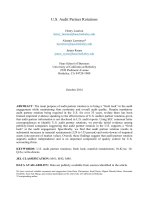International u s income tax
Bạn đang xem bản rút gọn của tài liệu. Xem và tải ngay bản đầy đủ của tài liệu tại đây (2.64 MB, 455 trang )
International Applications
of U.S. Income
Tax Law
International Applications
of U.S. Income
Tax Law
Inbound and
Outbound Transactions
ERNEST R. LARKINS
John Wiley & Sons, Inc.
This book is printed on acid-free paper.
Copyright © 2004 by John Wiley & Sons, Inc. All rights reserved.
Published by John Wiley & Sons, Inc., Hoboken, New Jersey
Published simultaneously in Canada
No part of this publication may be reproduced, stored in a retrieval system, or transmitted in
any form or by any means, electronic, mechanical, photocopying, recording, scanning, or
otherwise, except as permitted under Section 107 or 108 of the 1976 United States Copyright
Act, without either the prior written permission of the Publisher, or authorization through
payment of the appropriate per-copy fee to the Copyright Clearance Center, Inc., 222
Rosewood Drive, Danvers, MA 01923, 978-750-8400, fax 978-750-4470, or on the web at
www.copyright.com. Requests to the Publisher for permission should be addressed to the
Permissions Department, John Wiley & Sons, Inc., 111 River Street, Hoboken, NJ 07030,
201-748-6011, fax 201-748-6008, e-mail:
Limit of Liability/Disclaimer of Warranty: While the publisher and author have used their
best efforts in preparing this book, they make no representations or warranties with respect
to the accuracy or completeness of the contents of this book and specifically disclaim any
implied warranties of merchantability or fitness for a particular purpose. No warranty may
be created or extended by sales representatives or written sales materials. The advice and
strategies contained herein may not be suitable for your situation. You should consult with a
professional where appropriate. Neither the publisher nor author shall be liable for any loss
of profit or any other commercial damages, including but not limited to special, incidental,
consequential, or other damages.
For general information on our other products and services, or technical support, please
contact our Customer Care Department within the United States at 800-762-2974, outside
the United States at 317-572-3993 or fax 317-572-4002.
Wiley also publishes its books in a variety of electronic formats. Some content that appears in
print may not be available in electronic books.
For more information about Wiley products, visit our web site at www.wiley.com.
Library of Congress Cataloging-in-Publication Data:
Larkins, Ernest R. (Ernest Radford)
International applications of U.S. income tax law : inbound and outbound transactions /
by Ernest R. Larkins.
p. cm.
Includes index.
ISBN 0-471-46449-X (cloth : acid-free paper)
1. Income tax—United States—Foreign income. 2. Investments, Foreign—Taxation—
Law and legislation—United States. 3. Aliens—Taxation—Law and legislation—United
States. 4. Foreign tax credit—United States. 5. Double taxation—United States.
I. Title: International applications of US income tax law. II. Title.
KF6419.L37 2004
343.7305′248—dc21
2003014219
Printed in the United States of America
10 9 8 7 6 5 4 3 2 1
My wife, Nancy, has acted as cheerleader (and unofficial press
agent) throughout the process. She has my appreciation for her
confidence and enthusiasm. I dedicate this text to the three people
I have enjoyed teaching the most—my own children—Joshua,
Esther, and Hannah. I also thank the many Georgia State
University students who have taken my international tax class,
and wish them well in their lives and careers.
About the Web Site
As the purchaser of this book, International Applications of U.S. Income
Tax Law: Inbound and Outbound Transactions, you have access to the
supporting Web site:
www.wiley.com/go/internationaltax
The Web site contains a Word file for the “U.S. Model Income Tax
Treaty (September 20, 1996).”
The password to enter this site is: international.
vii
Contents
Preface
PART ONE
Generic Topics
CHAPTER 1
Policy and Overview
International Tax Policy
Entity Selection
Generic Topics
Inbound Transactions
Outbound Transactions
Related Person Transactions
CHAPTER 2
Jurisdiction to Tax
Tale of Two Systems
U.S. Jurisdiction
Double Taxation
CHAPTER 3
Income Tax Treaties
Treaty Creation and Authority
Treaty Scope
Personal Service Income
Business Profit
Investment Income
Gain from Dispositions
Special Clauses
CHAPTER 4
Source of Income
Fundamental Importance
General Source Rules
xiii
1
3
3
7
10
11
12
14
16
16
20
21
23
24
27
30
33
40
45
46
49
49
50
ix
x
CONTENTS
Interest Income
Dividend Income
Personal Service Income
Rent and Royalty Income
Gain from Selling Property
Other Source Rules
CHAPTER 5
Allocation and Apportionment
Allocation to Classes
Apportionment to Groupings
Interest Deductions
Research and Experimental Deductions
Other Deductions
PART TWO
Inbound Transactions
CHAPTER 6
Foreign Persons
Residency Tests
Counting Days
Dual Status Aliens
Important Elections
CHAPTER 7
Nonbusiness Income
Fixed or Determinable, Annual or Periodical Income
Marginal Tax Rates
Nonbusiness Exemptions
Interest Stripping
CHAPTER 8
Business Income
U.S. Trade or Business
Effectively Connected Income
Business Exemptions
Income Tax Calculations
51
55
59
62
63
77
81
82
84
87
95
102
105
107
108
111
112
114
119
119
122
125
129
133
134
139
147
147
Contents
CHAPTER 9
Real Property Gains
U.S. Real Property Interests
U.S. Real Property Holding Corporations
Withholding Procedures
Structures for Holding U.S. Real Estate
CHAPTER 10
Branch Taxes
xi
150
151
155
164
165
172
Branch Profits Tax
Marginal Tax Rates
Branch Interest Tax
172
177
179
PART THREE
Outbound Transactions
183
CHAPTER 11
Foreign Tax Credit
Creditable Taxes
Deemed Paid Taxes
Limitation Formula
Tax-Sparing Credit
CHAPTER 12
Controlled Foreign Corporations
CFCs and U.S. Shareholders
Subpart F Income
Earnings Invested in U.S. Property
Constructive Dividends
CHAPTER 13
Other Antideferral Provisions
Passive Foreign Investment Companies
Qualified Electing Funds
Foreign Personal Holding Companies
CHAPTER 14
Export Incentives
Extraterritorial Income Exclusion
Domestic International Sales Corporations
185
188
204
212
238
241
245
254
277
280
285
285
298
301
309
311
313
xii
CONTENTS
CHAPTER 15
U.S. Individuals Abroad
Foreign Earned Income Exclusion
Income Sourced in U.S. Possessions
Social Security Concerns
PART FOUR
Related Person Transactions
CHAPTER 16
Transfer Prices
General Principles
Loan of Funds
Performance of Services
Rental of Tangible Property
Sale or License of Intangible Property
Sale of Tangible Property
Valuation Misstatements
Advance Pricing Agreements
CHAPTER 17
Asset Transfers
Outbound Asset Transfers
Inbound Asset Transfers
External Asset Transfers
327
328
344
346
349
351
354
358
360
362
363
371
376
378
380
383
391
393
Glossary
395
Table of Statutes
421
Table of Regulations
423
Table of Cases
425
Table of Rulings
427
Index
429
Preface
lobalization means that increasingly few tax professionals can avoid international tax issues. The daily capital that flows into and out of the
United States exceeds $14 billion. Many of these flows involve tax issues.
Without an understanding of international tax issues, tax professionals can
easily overlook benefits or inadvertently stumble into tax pitfalls. Beyond
the legal text, professionals must consider the marginal tax rate applicable
to international transactions.
An extraordinarily broad topic, international taxation includes the
study of many countries’ tax laws and the international agreements among
those countries affecting tax liabilities. This book explores a less-ambitious
area: the international aspects of U.S. income tax law. Thus, the 17 chapters
focus on the U.S. income tax laws and international agreements affecting
cross-border transactions of both U.S. and foreign persons. The tax systems
of other nations receive attention only to illustrate overall tax concepts or
the application of U.S. law.
U.S. international taxation involves two major types of activities crossing national borders: inbound and outbound transactions. Inbound transactions occur when foreign persons conduct business in the United States or
make U.S. investments. Outbound transactions occur when U.S. persons
conduct business abroad or make foreign investments.
For both inbound and outbound transactions, knowledge of certain
“generic” topics is crucial. Thus, Part One explains topics applicable to both
inbound and outbound activities: tax policy objectives, jurisdiction, tax
treaties, source of income rules, and allocation and apportionment procedures. Part Two discusses inbound transactions, including the determination
of residency status, U.S. taxation of foreign persons, meaning of effectively
connected income, U.S. tax consequences when foreign persons dispose of
U.S. real estate, and the U.S. branch profits tax. Some concepts involving the
taxation of foreign persons (e.g., effectively connected income) facilitate the
study of outbound transactions. Also, the statutory and regulatory law dealing with inbound transactions is less voluminous and complex than the tax
law dealing with outbound transactions. For these reasons, outbound topics
follow inbound topics. Part Three covers the foreign tax credit, antideferral
rules, and incentives for exporting and working abroad. Finally, Part Four
deals with related person issues such as transfer pricing and international
G
xiii
xiv
PREFACE
reorganizations. These rules may affect inbound and outbound transactions
but are not essential to the understanding of either. Thus, the text covers related person issues last.
The text contains many special features:
Empirical Evidence: Located primarily in footnotes, this feature references studies linking tax law changes and the managerial reaction of
multinational companies.
Examples: Apply points of law discussed in the text. Many illustrate application of U.S. provisions with examples based on foreign tax laws.
Exhibits: Assist readers in visualizing and understanding fundamental
provisions.
Flashbacks: Relate the current text to materials appearing earlier in the
book and, thus, assist the reader in synthesizing rules and concepts.
Important Terms: Appear in bold type within the text and are defined
in the glossary.
Key Cases: Summarize most important judicial opinions.
Marginal Tax Rate Analyses: Numerous equations and formulas facilitate the reader’s understanding and synthesis through focus on aggregate economic effects of legal rules.
Pointers: Showcase compliance-related matters, planning ideas, research
materials, comparative tax systems, and cultural issues.
I hope this text whets the appetite of the international tax novice, and
provides practical guidance to those with international experience. To this
end, I invite and welcome all comments, suggestions, and corrections. The
reader can send correspondence to Ernest R. Larkins, P.O. Box 4050, School
of Accountancy, Georgia State University, Atlanta, GA 30303-4050 or to
PART
One
Generic Topics
CHAPTER
1
Policy and Overview
o assist readers in viewing this book’s contents from the proper perspective, this chapter begins with a brief explanation of international tax policy and its economic effects. Next the chapter discusses an essential topic
that does not fit neatly into other chapters but underlies many tax strategies:
the taxpayer’s choice of business entities for its international activities. The
remainder of the chapter provides a brief overview of topics covered
throughout the book to give readers a frame of reference to which they can
relate materials in later chapters.
To facilitate discussions in each chapter, the text often refers to “nations” as either “home” or “host countries.” The home country is the country where the taxpayer under consideration resides. The host country is the
country (other than the home country) where the taxpayer conducts business
or makes investments and, thus, is sometimes called the source country.
T
INTERNATIONAL TAX POLICY
Governments formulate international tax law to accomplish economic objectives. The more prominent international aspects of U.S. tax law find
their roots in three neutrality standards. The first, capital export neutrality
(CEN), seeks to assure that the global tax burden is identical on a given
amount of income earned domestically and an identical amount of income
earned abroad. From the perspective of U.S. persons, CEN means that the
tax law creates neither an incentive nor a disincentive to conduct business
or invest abroad.1 So, the tax law remains neutral on capital outflow issues
and becomes a nonfactor. When CEN exists, U.S. persons make foreign
business and investment decisions based on market analyses, production
1
The Internal Revenue Code and many works on international taxation follow the
legal practice of defining “U.S. person” and “foreign person” to include both individuals and entities. Thus, foreign persons in this text refers collectively to foreign individuals and foreign entities, and U.S. persons refers to both U.S. individuals and
U.S. entities.
3
4
GENERIC TOPICS
costs, business risks, and other nontax factors. That is, capital follows the
highest risk-adjusted, before-tax rates of returns, wherever located. Achieving CEN leads to more efficient uses of U.S. economic resources and, thus,
higher productivity levels. When perfect competition exists, CEN assures
optimal resource allocations and productivity levels.
EXAMPLE
In addition to its U.S. activities, Anchor, Inc., a Delaware corporation,
conducts business through its branch in Singapore. Anchor earns
$100,000 Singaporean profit and $900,000 U.S. profit. The tax rates in
Singapore and the United States are 24.5 and 35 percent, respectively.2
Anchor, Inc.
(U.S. Corporation)
$900,000 profit
Branch in Singapore
$100,000 profit
The United States taxes the worldwide income of Anchor, including
the foreign branch profits, but provides a credit for the Singaporean
taxes Anchor pays. The calculation of tax liability appears as follows:
Taxable income
Tax rates
Income tax before credit
Foreign tax credit
Tax liability
Singapore
$100,000
× .245
_________
$
24,500
_________
_________
United States
$1,000,000
× .35
__________
$ 350,000
− 24,500
__________
$
325,500
__________
__________
On a worldwide basis, Anchor pays $350,000 ($24,500 + $325,500)
income tax on its $1 million profit. If Anchor had earned the entire
$1 million in the United States, the U.S. income tax would have been
$350,000 ($1,000,000 × 35%) also. Thus, U.S. tax policy for this scenario is capital-export-neutral. Anchor owes the same total tax regardless of where it earns the $100,000.
2
PricewaterhouseCoopers, Corporate Taxes: Worldwide Summaries 2002–2003
(Hoboken, NJ: John Wiley & Sons, Inc., 2002), p. 737.
Policy and Overview
5
The second primary objective, capital import neutrality (CIN), focuses
on the market where individuals or entities conduct business or make investments and, when present, fosters global competitiveness. CIN exists
when individuals or entities bear the same tax burdens as individuals or
entities from other countries operating within the same market. The focal
market might be the United States or a foreign host country. CIN allows
businesses to compete globally on an equal footing with similar businesses
from other countries. Like CEN, equalizing the tax burden for business operations within a given market causes businesses to focus on nontax factors
when making decisions. This focus results in a more efficient allocation of
host country resources.
EXAMPLE
Returning to the first example, suppose Anchor, Inc. decides to conduct
business in Singapore through a foreign subsidiary rather than a foreign
branch. As long as the multinational does not directly or indirectly repatriate the earnings, U.S. law effectively shields the foreign subsidiary’s
$100,000 profit from U.S. taxation. Thus, the worldwide tax burden on
the $100,000 foreign profit is $24,500 ($100,000 × 24.5%). In comparison, France exempts the profit of foreign subsidiaries conducting
business in Singapore, meaning that they also face an effective worldwide tax rate of 24.5 percent.3 In this situation, U.S. tax law is CIN visà-vis French tax law for business conducted in Singapore. Also, U.S. tax
law is CIN for U.S. businesses competing in Singapore with Singaporean
companies.
The third standard, national neutrality (NN), finds less acceptance
among policy makers, at least on a broad scale, than either CEN or CIN.
This standard recognizes that individuals and entities must share international business and investment returns with the U.S. government, a silent
partner that, nonetheless, demands payment. NN assures that the United
States always gets the same percentage cut from the “tenuous partnership,”
regardless whether the taxpayer commits capital domestically or abroad.
Under this standard, U.S. persons deduct foreign government levies (e.g.,
foreign property taxes, import duties, and other noncreditable taxes) the
same as other business expenses. In contrast to the credit benefit in the first
example and the exemption benefit in the second example, merely permitting taxpayers to deduct foreign taxes represents a disincentive to conduct
3
PricewaterhouseCoopers, Corporate Taxes: Worldwide Summaries 2002–2003
(Hoboken, NJ: John Wiley & Sons, Inc., 2002), p. 737.
6
GENERIC TOPICS
business or invest abroad; comparable U.S. business and investment activities avoid this foreign tax expense. In effect, NN induces a U.S. person to
engage in international activities only when the risk-adjusted, before-tax return abroad exceeds the return available in the United States and, thus, does
not result in the most efficient allocation of resources. However, in comparison with CEN and CIN, NN preserves the U.S. tax revenue from foreign activities.
EXAMPLE
Bitter Jitters, Inc., a U.S. company, sells delectable candy products for
$140 a crate. Each crate of candy products costs $70 to manufacture,
and related selling and administrative expenses total $30. The U.S. tax
rate is 35 percent. On a recent foreign sale, Bitter pays a $20 foreign
government levy. Bitter deducts the foreign levy, an application of NN.
As the table following illustrates, deducting the $20 results in a $20
before-tax profit and allows Bitter to pay the U.S. government its 35
percent share, or $7. In contrast, allowing Bitter to credit the $20 foreign levy (if indeed the levy qualifies as a foreign income tax) precludes
the U.S. government from sharing in the $20 profit.
Selling price
Cost of goods sold
Selling and administrative
Foreign levy as deduction
Taxable income from sale
U.S. corporate tax rate
U.S. tax before credit
Foreign levy as credit
U.S. tax liability
Foreign Tax
Deducted
$140
− 70
− 30
− 20
_____
$ 20
× 35%
_____
$ 7
_____
_____
Foreign Tax
Credited
$140
− 70
− 30
$ 40
× 35%
_____
$ 14
− 20
_____
$ 0
_____
_____
Other objectives also play significant roles in formulating U.S. tax policy. For instance, the United States exempts the nonbusiness interest income
of foreign persons derived from deposits in U.S. banks, savings institutions,
and insurance companies.4 This exemption provides tax benefits to foreign
4
IRC §§871(i), 881(d).
Policy and Overview
7
investors that U.S. investors do not enjoy and, thus, violates CIN. The objective seeks to attract foreign capital to support the U.S. economy. Also,
qualified U.S. individuals working abroad can exempt up to $80,000 of
their foreign earnings from U.S. tax.5 This benefit contravenes CEN. A U.S.
individual performing the same services within the United States does not
qualify for the $80,000 exemption. In short, the international provisions
under U.S. tax law evidence a hodgepodge of sometimes-conflicting economic objectives. Nonetheless, CEN and CIN play more important roles
than the other objectives.
ENTITY SELECTION
The tax consequences of international business transactions often depend on
the business form through which such activities occur. Foreign branches (or
divisions or offices) represent extensions of businesses, not separate legal or
taxable entities. Foreign branch losses flow through to offset profits on the
entity’s domestic return. Similarly, foreign branch profits flow through to
the entity’s domestic return, as does income tax the foreign branch pays on
such profits. In addition to an income tax, some foreign countries impose a
branch profits tax (analogous to a dividend withholding tax) on estimated
remittances from the foreign branch to its home office. U.S. multinationals
often decide not to conduct business abroad through a branch since the
branch form does not protect domestic assets from legal claims arising
abroad. However, banks and other financial institutions sometimes use foreign branches to meet capital reserve requirements in host countries.
EXAMPLE
Short Sport, Inc., a U.S. company, provides instructional training in
various athletic events for individuals under age 13. Three years ago, it
established a Canadian division, hoping to duplicate its domestic success. The division experienced losses during the first two years. Short
Sport deducted the losses against its U.S. profit. During the current year,
the division shows a profit, which Canada taxes. On its U.S. return,
Short Sport reports the profit and claims the Canadian income tax as a
foreign tax credit.6
5
IRC §911.
As Chapter 11 explains, a recapture provision may prevent Short Sport from claiming the full Canadian income tax as a foreign tax credit. Also, as Chapter 10 discusses, a branch profits tax might apply in the profitable year.
6
8
GENERIC TOPICS
For international joint ventures, U.S. multinationals often use fiscally
transparent entities such as foreign partnerships. Like branches, partnerships flow through losses, profits, and foreign income tax to their U.S. owners. In contrast to corporate joint ventures, U.S. multinationals experience
fewer problems claiming foreign tax credits when they use partnership joint
ventures. Also, foreign partnership remittances avoid dividend withholding taxes. However, like branches, foreign partnerships do not limit owners’
liabilities.
Foreign subsidiaries possess two advantages over foreign branches and
partnerships. First, they allow U.S. parent companies to defer U.S. tax on
foreign earnings until actually or constructively received as dividends. The
longer the deferral, the smaller the present value of the U.S. tax when finally
paid. However, this sword cuts two ways: U.S. parent companies cannot
claim any credit for foreign income tax the subsidiary pays until the parents
actually or constructively receive dividends. Also, unlike branches and partnerships, foreign subsidiaries do not allow U.S. parent companies to deduct
foreign losses. Second, incorporating abroad effectively shields assets of U.S.
parent companies from legal claims against foreign subsidiaries. Exhibit 1.1
summarizes the characteristics of the three business forms just discussed.
Exhibit 1.1 highlights the key trade-off when selecting foreign business
structures—to obtain flow-through treatment exposes the U.S. owners to
legal liability claims from abroad. However, check-the-box procedures
allow many foreign businesses to select their own treatment under U.S. law,
but only if they are not per se corporations.7 Exhibit 1.2 lists some examples
of per se corporations, which U.S. law always treats as corporations.
Except for per se corporations, foreign business entities with only one
owner can elect treatment as either branches or corporations under checkthe-box procedures. Similarly, foreign business entities with two or more
owners can elect treatment as either partnerships or corporations.8 The ability to choose extends to general and limited partnerships, joint ventures, limEXHIBIT 1.1 Foreign Business Structures
Operating loss
Operating profit
Foreign income tax
Asset protection
7
8
Branch
Partnership
Subsidiary
Flow through
Flow through
Flow through
Unlimited
liability
Flow through
Flow through
Flow through
Unlimited
liability
Defers deduction
Defers U.S. tax
Defers tax credit
Limited
liability
Reg. §301.7701-2(b)(8).
Reg. §301.7701-3(a).
9
Policy and Overview
EXHIBIT 1.2 Selected Per Se Corporations
Jurisdiction
Foreign Business Entity
Australia
Canada
France
Germany
India
Italy
Japan
Mexico
Netherlands
Norway
Sweden
Switzerland
United Kingdom
Public Limited Company (Ltd.)
Corporation (Inc., Ltd., or SCC)
Société Anonyme (SA)
Aktiengesellschaft (AG)
Public Limited Company (Ltd.)
Società per Azioni (SpA)
Kabushiki Kaisha (KK)
Sociedad Anónima (SA)
Naamloze Vennootschap (NV)
Allment Aksjeselskap (ASA)
Publika Aktiebolag (AB)
Aktiengesellschaft (AG)
Public Limited Company (Ltd.)
ited liability companies, and other business entities that are not per se corporations. Exhibit 1.3 provides some examples of foreign business entities
that can select their treatment under check-the-box regulations.
Regulations provide default classifications for business entities failing
to choose, which depend on the number of owners and whether foreign jurisdictions treat entities as possessing limited liability. By default, regulations classify business entities with two or more owners as partnerships if
the foreign jurisdiction considers at least one owner to possess unlimited liability. Similarly, U.S. law disregards single-member entities in which the
owner has unlimited liability (i.e., treats such entities as foreign branches or
tax nothings). Otherwise, the default provisions classify business entities as
corporations.9
EXHIBIT 1.3 Selected Foreign Entities That Can “Check the Box”
Jurisdiction
Foreign Business Entity
France
Germany
Italy
Japan
Mexico
Switzerland
Société à Responsabilité Limitée (SARL)
Gesellschaft mit beschränkter Haftung (GmbH)
Società a Responsabilità Limitata (SARL)
Yugen Kaisha (YK)
Sociedad de Responsabilidad Limitada (S de RL)
Gesellschaft mit beschränkter Haftung (GmbH)
9
Reg. §301.7701-3(b).
10
GENERIC TOPICS
COMPLIANCE POINTER: Business entities file Form 8832, Entity Classification Form, to select their classification. Once selected, an entity
cannot change its classification for five years without IRS consent.10
Check-the-box elections often produce hybrid entities that the foreign
jurisdiction treats as limited liability companies but that the United States
recognizes as flow-through structures. Conversely, when foreign jurisdictions recognize business entities as flow-through structures but the United
States treats them as corporations, reverse hybrid entities result. Hybrids and
reverse hybrids sometimes provide U.S. multinationals with tax arbitrage
opportunities or the ability to reduce global taxes further than if all jurisdictions characterized business entities similarly.
GENERIC TOPICS
Governments impose taxes on individuals and entities only when they have
jurisdiction to tax. National laws define jurisdiction and establish global or
territorial tax systems. Countries with global systems, such as the United
States, tax the worldwide income of their residents and domestic entities.
Countries with territorial systems, such as France, tax only income from
within their borders. More than one nation sometimes has jurisdiction to tax
the same income from international transactions, giving rise to possible
double taxation. Income tax treaties represent one means of addressing double tax situations.
Income tax treaties mitigate the effect of double taxation. For instance,
treaties prevent host countries from taxing treaty partner residents on specified income. For these transactions, CEN results if the residents’ home
country taxes the income at regular rates. For instance, the United StatesSpain income tax treaty prevents Spain from taxing income a U.S. business
derives within Spain as long as the income is not attributable to a Spanish
permanent establishment.11 The treaty overrides Spanish law, which otherwise might tax such income in addition to U.S. law, resulting in double taxation. Most treaty provisions are reciprocal, so the same treaty article
restricts U.S. jurisdiction to tax income a Spanish business derives from the
United States, assuming the business’s income is not attributable to a U.S.
permanent establishment.
Source rules dichotomize income between U.S. and foreign sources.
Each type of income (e.g., compensation for services or dividends) follows a
10
11
Reg. §301.7701-3(c).
United States-Spain income tax treaty (Feb. 22, 1990), art. 7(1).

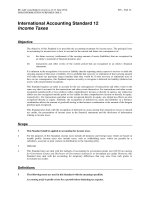
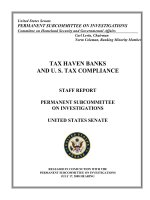
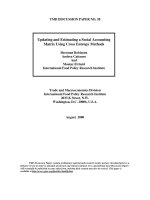
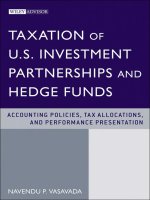

![brooks et al - 2012 - audit firm tenure and audit quality - evidence from u.s. firms [mafr]](https://media.store123doc.com/images/document/2015_01/06/medium_ayf1420548102.jpg)
